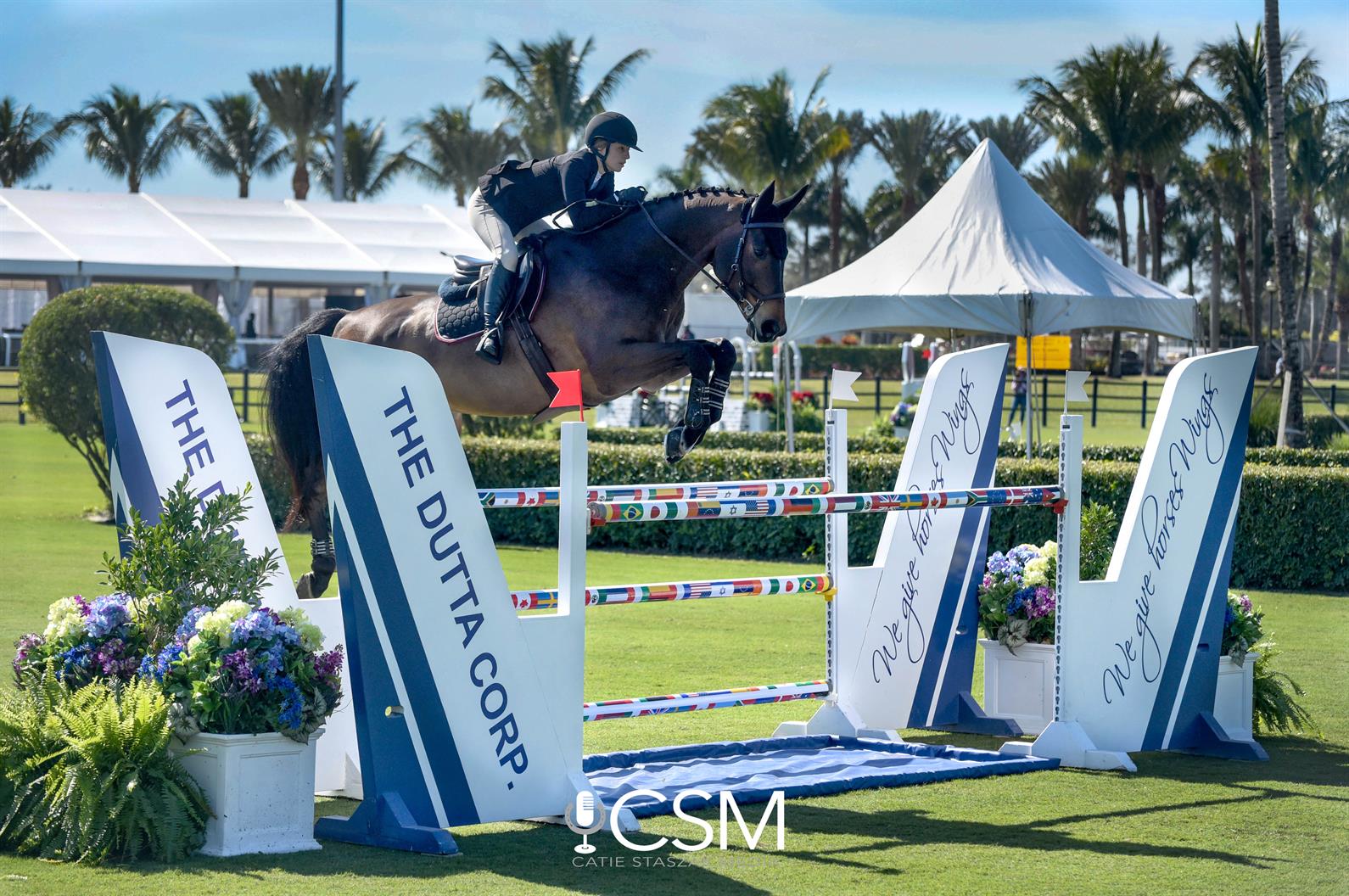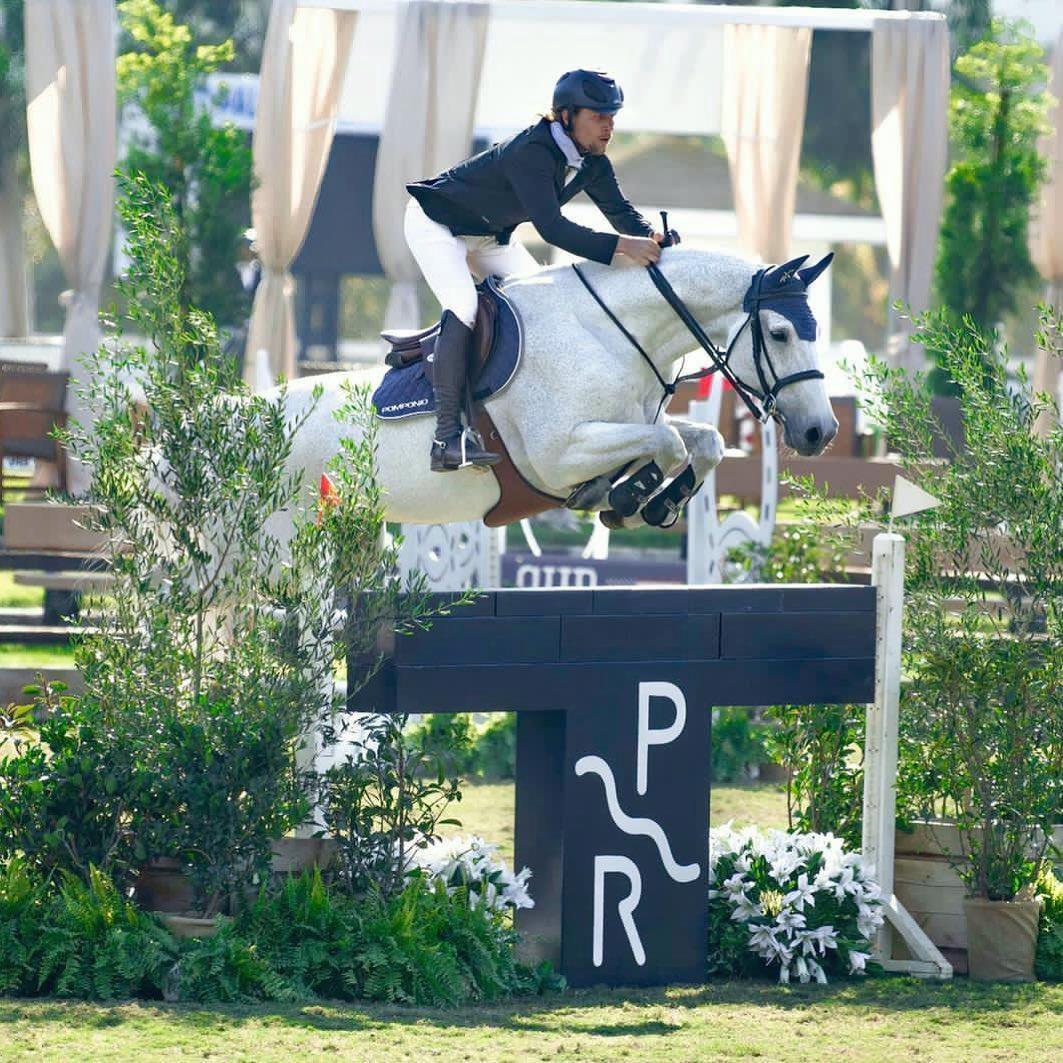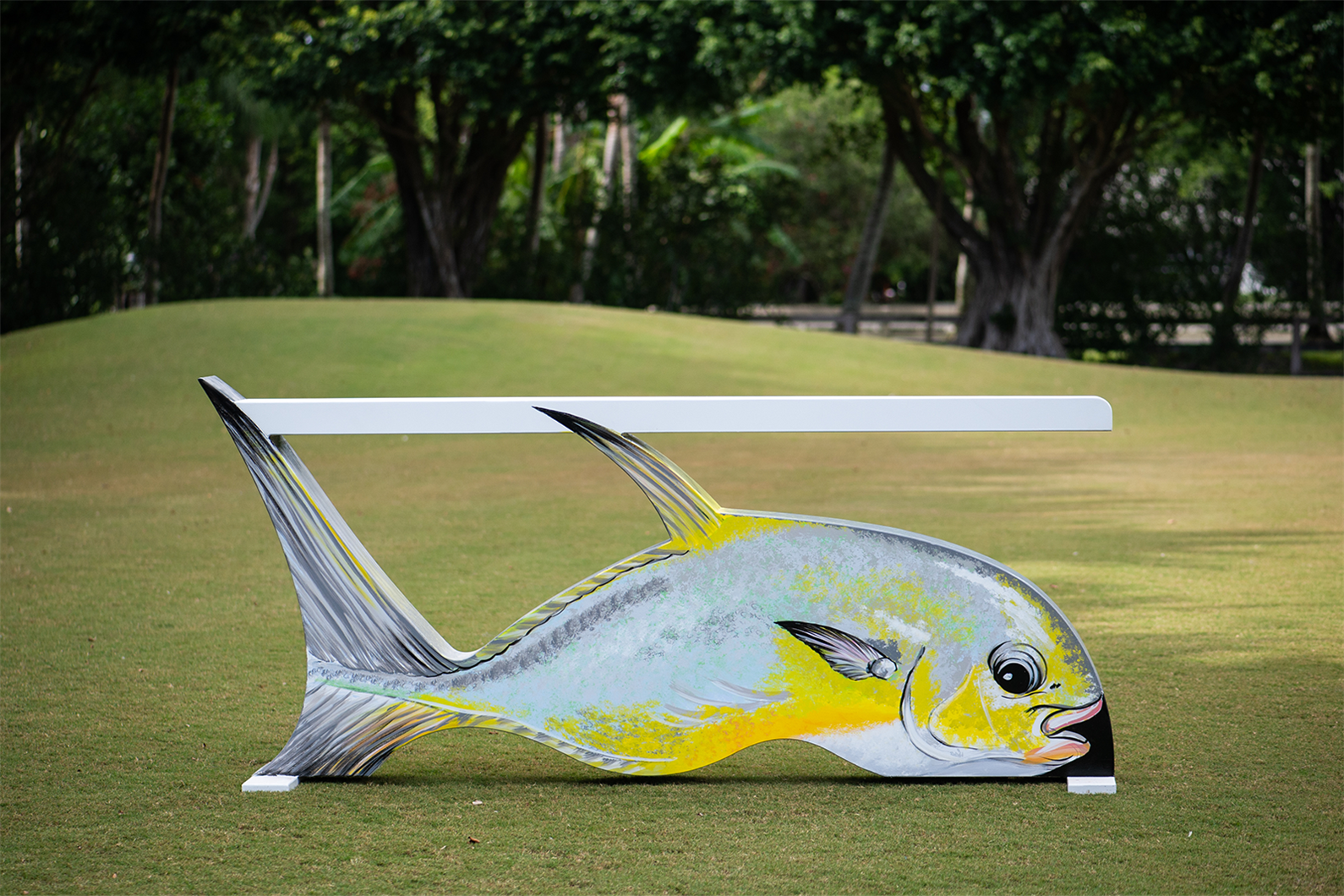Jump design is both an art and a science. Thanks to modern design techniques and materials, today’s jumps can be more eye-catching, lightweight, and safe than ever. We caught up with Javan Dalman, owner and founder of Dalman Jump Co., to learn more about designing jumps for maximum visual effect without compromising safety or convenience.
Tell us a bit about the science behind how you create jumps. For example, how does the way horses see and interpret color, height, etc., affect the way you design a jump?
The first element to the science of jump-building is whether or not the jump is solid or airy. This has a great effect on how the horse jumps a fence. The airier the jump, the more the horse will have to study it and the more the rider will have to manage the horse’s stride. With a more solid jump, the horse backs off and studies it, ultimately jumping it better.
There are colors that horses seem to react to, particularly ones that are the same tone as the ground, whether it be sand or grass. Green rails on a grass field or tan poles on a sand

arena would increase the difficulty of a fence.
More than the use of the color, though, is the use of stripes—horizontal stripes, spiral poles, solid and basic stripes. Solid poles jump more difficultly; they are harder for the horse to read. Spirals are spooky in and of themselves and will elicit a bigger jump from a horse or possibly a miscalculated effort. Horizontal stripes can also be hard for a horse to read and can result in poles down.
I’ve designed some other creative poles, like the flag poles on our Dutta Corp. jump. Horses tend to study those poles a lot, but they tend to jump them impressively, making for great photos.
Basic striped poles with modest patterns—most frequently with a 4’ stripe in the middle of the pole—are more inviting. They create an aisleway for the horse and are frequently used in schooling poles and within gymnastics and training grids.
I’ve found that horses don’t really seem to like a sea-blue color. Black and white rails also seem to come down a lot. Neon poles are fun, too, but mostly just for the exhibitors!
What tips do you have for a client who comes to you wanting to design a custom jump or course of jumps?
The most important element of jump design is scale. Scale determines how well your logo looks on a jump, how impressive the design is, and how well it functions.
The next would be the use of color and contrast. I always say, “A cool logo makes a cool jump.” Don’t come to me with Times New Roman text as your logo and expect a cool result!
I hand draw every design. I like the texture, and I like the ability to draw, literally, anything. I don’t have to search for an existing icon or logo online; there are things in my mind that don’t exist. All my drawings are done on graphing paper; each cube equals 3”. You can take graphing paper to the bank, all day; it always equals a proportionate dimension.
I also keep all of my drawings in my office, so customers can go through them for inspiration.

Photo: Julie's Equine Photography
What safety features do your jumps have that jumps a few decades ago wouldn’t have had?
All of our jumps have smooth surfaces, and there are no sharp edges on our jumps. We have breakaway cups that release under pressure; we definitely didn’t have those in the 1970s and some of the 1980s. Breakaway cups are now are scientifically designed and tested to FEI specifications. They won’t get used unless they break away with the correct amount of force. Our breakaway cups are all built to FEI safety specifications. On our stackable walls, the blocks slide and give way very easily.
How have changes in the sport of show jumping over the last 20 years or so changed the way jumps are designed?
The jumps are becoming so much lighter. We do weigh the poles for competition, so they are becoming lighter by weight, but they are also becoming airier.
We make very thin planks that have arches to them that are very delicate.
The jump cup depth is also half of what it used to be. At the top of the sport, the cups are only 18 millimeters deep. We sell cups at that depth so riders can practice with them.
Narrower jumps are harder to jump, and having a course where the material is no longer than 10’ is now the norm. Courses are also being built with more solid-color poles, and we’re seeing narrower standards that are less impressive, making the jump more likely to come down.
Every course now has walls. Dalman Jump Co. has really pioneered wall-building. Everyone now has a wall at home and in their show ring, and it has taken the level of the sport up from the standpoint of capable horses, capable riders, and technical riding.
I will never forget the introduction of our Signature T-Wall at the Kentucky Invitational on the Split Rock Jumping Tour three years ago. Six horses stopped at it, because they had never seen anything like it. It was a revolutionary design. Most of the walls on the circuit then were standard arches and castle-looking walls that horses had seen for years. We now have built dozens of T-shaped and asymmetrical walls. In Traverse City, Mich., last summer, we introduced the GGT wall, which comes out of ground at a 30-degree angle. Walls are forces to be reckoned with now.

Photo: Courtesy of Dalman Jump Co.
How has your own experience as a jumping athlete influenced the way you design jumps?
Riding in the ring solidifies the effects of jump designs on horses and riders. By riding in the ring, it helps me to confirm how horses and riders will react to given obstacles.
How are new materials and/or technologies improving jumps (reduced pole weight, durability, etc.) and fueling more creativity in design?
We are proud of the material that we use in our jump building. It’s all in the details. We have no plastic anywhere on our aluminum standards, and all the caps are welded aluminum. We
are also the only company in the industry with powder-coated tracks on our standards, which quiets the raising of cups and prevents corrosion. Of course, it also looks nicer.
The stack-ability of our standards is second to none. Our poles are capped so that they don’t touch each other when stacked, and they are coated with a UV clear-coat to protect the paint. We offer a lifetime warranty on all of our jumps.
Your work arguably combines science and art. From a creative perspective, what is your favorite jump design? And what is your favorite part of the process of designing and building a jump?
I might have a new favorite jump design in a permit-fish wall that I recently designed for a client’s farm. It’s still exciting for me to take an organic shape like a fish and turn it into a horse jump, without losing the shape of the creature. You’re basically jumping a fish, and that is the coolest part: to keep it as organic as possible.
My favorite part of the process is harnessing a client’s passion and creating a beautiful obstacle for their farm or show. It’s something that will be exciting and memorable every day for them and for me when they walk out to their arena.


